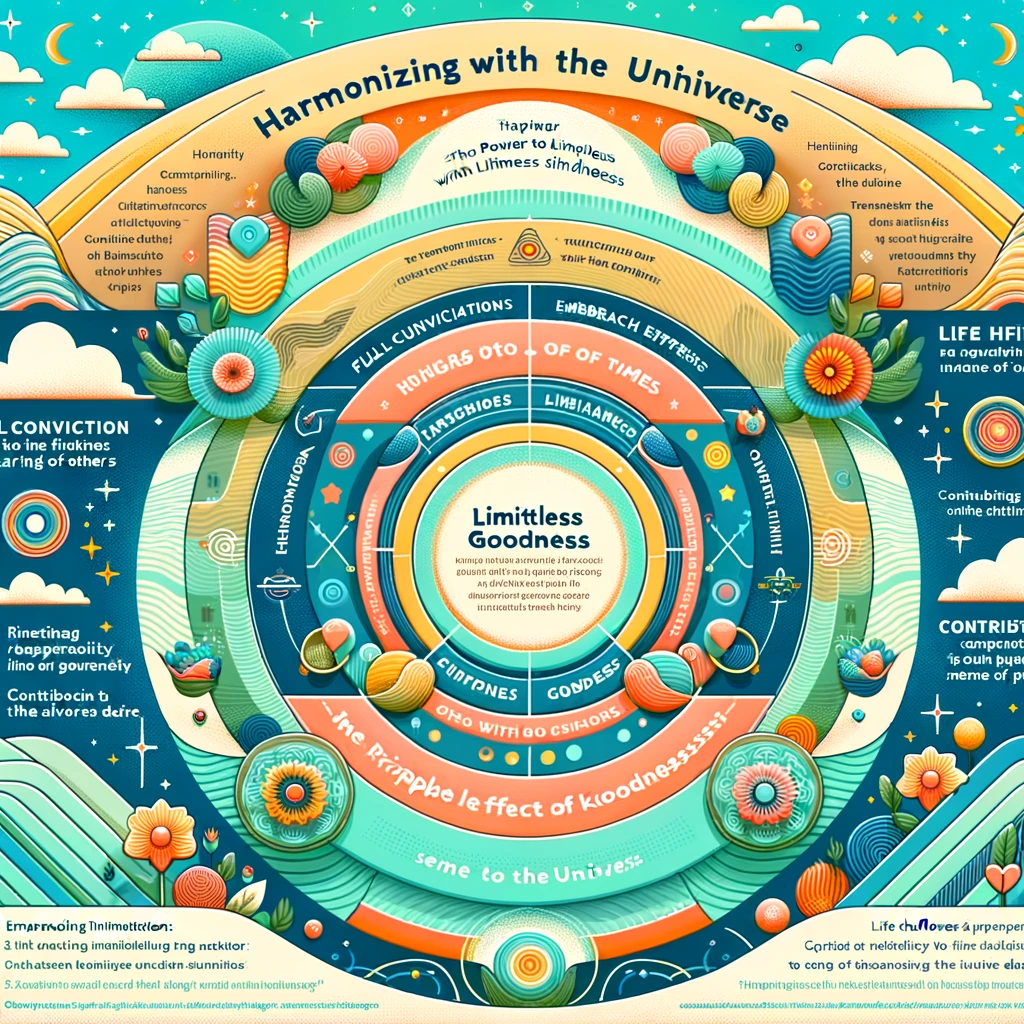When we engage in actions guided by a genuine concern for others, we align ourselves with a harmonious flow of goodness. This alignment is not just a philosophical concept; it’s a tangible shift in how we perceive and interact with the world. In this state, our limitations transform into opportunities, and our individual efforts gain universal significance.
A key aspect of this alignment is the recognition of our limitations. This isn’t about conceding defeat or acknowledging weaknesses. Instead, it’s about understanding our role in the vast tapestry of the universe. By accepting that we are just one part of a larger whole, we relieve ourselves of the pressure to be all things to all people. This acceptance is liberating, freeing us to focus on what we can do, rather than what we can’t.
This shift in perspective opens up a new realm of possibilities. When we act with the conviction that our part, however small, is significant, we tap into the ‘frequency of goodness.’ This is not a literal frequency, but a metaphorical one, representing a state of being where our actions, thoughts, and intentions are in sync with positive, universal forces.
In this state, we find that our actions have a ripple effect, touching lives in ways we may never fully comprehend. The kindness we show to a stranger, the support we offer to a friend, the dedication we bring to our work – these actions resonate beyond the immediate moment, contributing to a collective pool of goodness.
Moreover, when we act with a full heart, without expectation of reward or recognition, we align ourselves with a kind of universal reciprocity. The universe, in its vast and mysterious ways, seems to support and carry those who walk the path of goodness. This isn’t to say that life becomes free of challenges, but rather that we are better equipped to face them, buoyed by a sense of purpose and a belief in the greater good.
In conclusion, the journey towards alignment with goodness is not about achieving perfection or transcending our humanity. It’s about embracing our limitations, acting with genuine care for others, and trusting that, in doing so, we become part of something far greater than ourselves. This is where true limitlessness lies – in the understanding that by doing our part well, no matter how small, we contribute to the universal dance of goodness.









